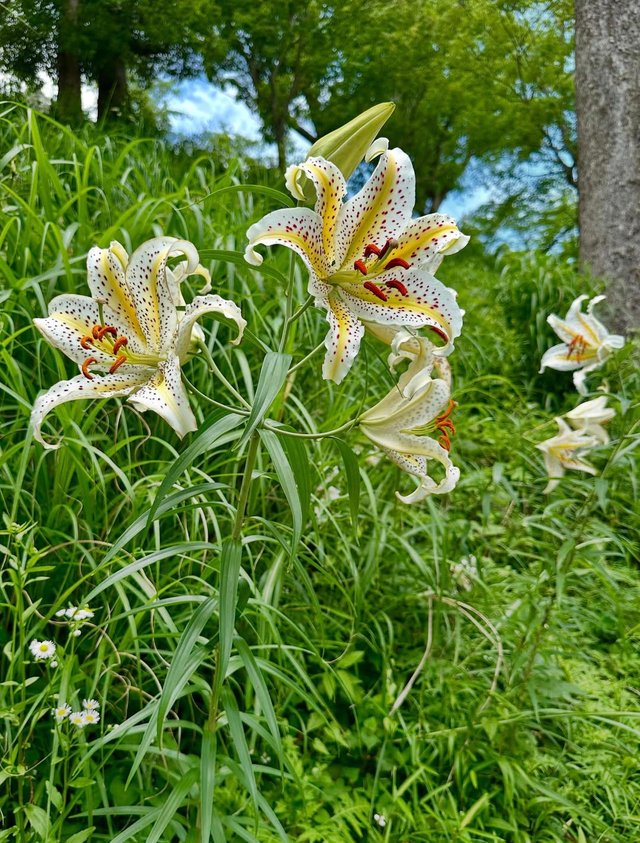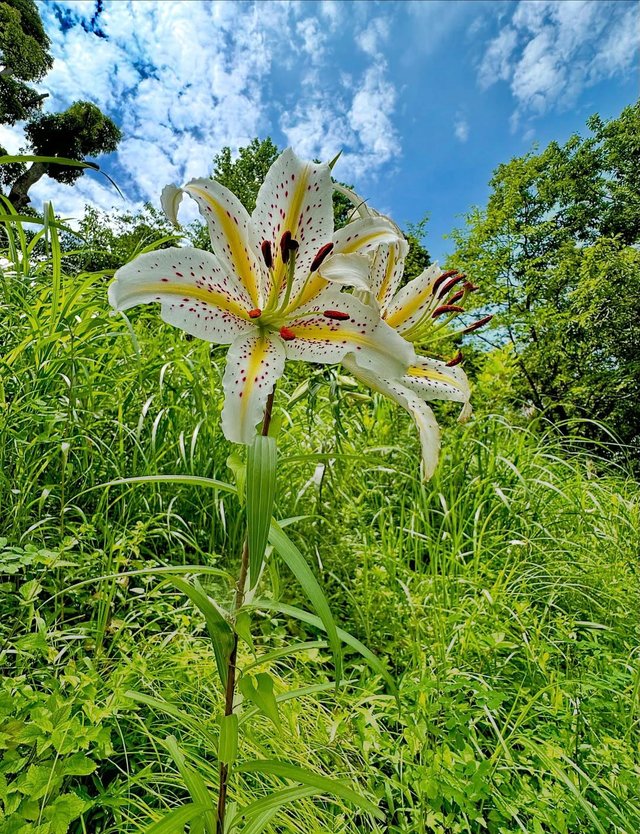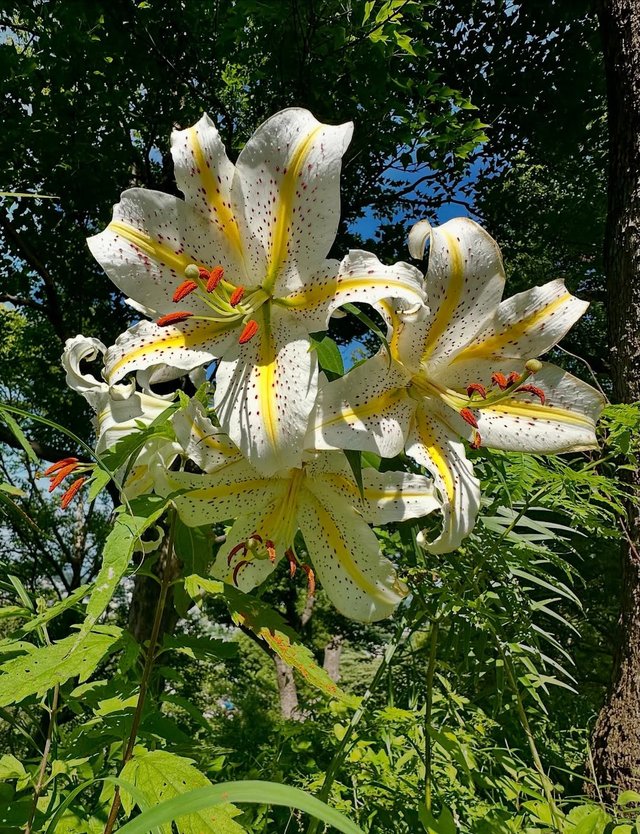Golden-Rayed Lily
One of the most stunning and fragrant flowers in the world, the Golden-rayed lily is a floral masterpiece of nature. Often called the Mountain Lily or the Goldband Lily,this species is native to Japan, where it is revered not only for its breathtaking beauty but also for its symbolic and cultural significance.The Golden-rayed lily is endemic to Japan, found growing wild in the mountainous regions of Honshu and Kyushu. It thrives in well-drained, humus-rich soil and typically blooms in the midsummer months, adding golden accents to forest clearings and hillsides. These lilies often appear in partially shaded areas, where they receive dappled sunlight.
The Golden-rayed lily is easily recognized by its large, trumpet-shaped flowers, which can reach up to 10 inches in diameter. Each petal is creamy white with a golden-yellow stripe down the center and is dotted with rusty red speckles. The contrast of colors makes the flower appear almost painted.In Japanese culture, the Golden-rayed lily symbolizes purity, elegance, and transience. Its fleeting bloom mirrors the Buddhist notion of impermanence, a theme that frequently appears in Japanese poetry and art. It is also associated with nobility and refinement, often seen in traditional ikebana.
The Golden-rayed lily’s sweet scent and open structure attract a variety of pollinators, especially moths and bees. Its presence in gardens and wild ecosystems helps support biodiversity and natural pollination cycles.However, in some areas, deer and rodents may feed on its bulbs or stems, so gardeners often take measures to protect them.The Golden-rayed lily is more than just a flower—it’s a living symbol of elegance, nature’s artistry, and cultural depth. With its striking golden stripes, intoxicating fragrance, and rich historical roots, this lily continues to captivate hearts around the world.



